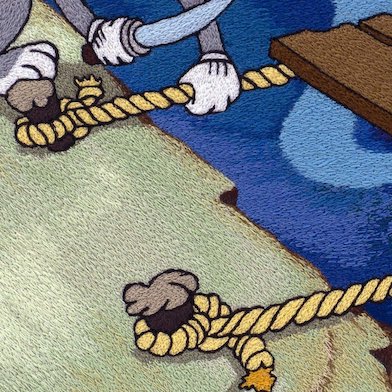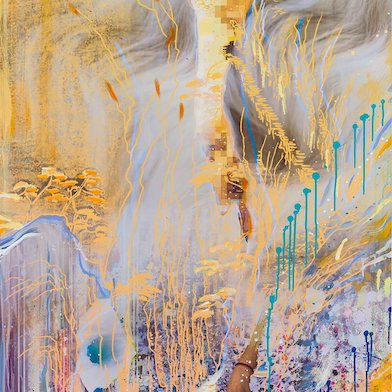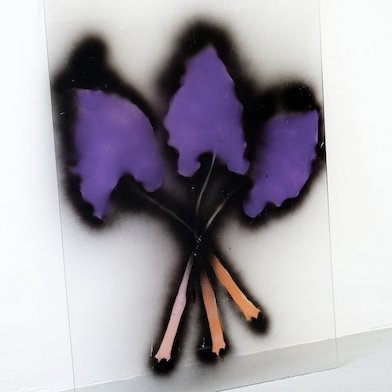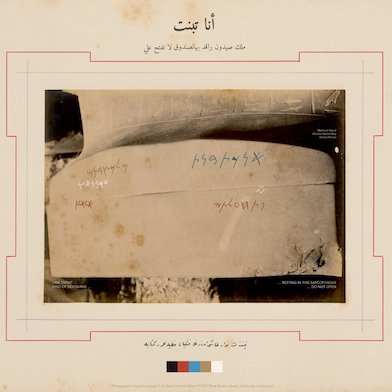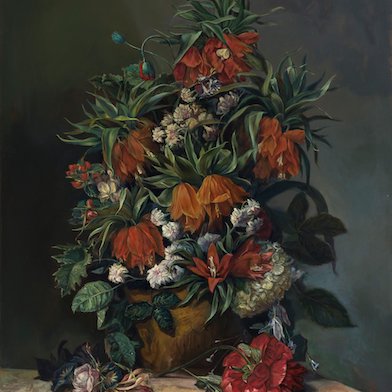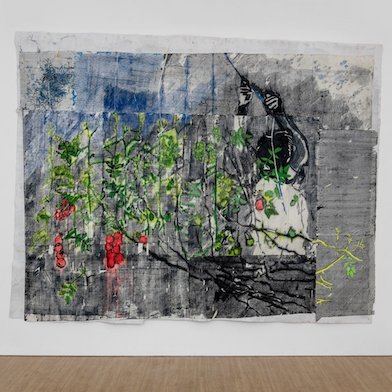
Open: Tue-Sat 11am-7pm
Visit
Jean-Baptiste Bernadet: Time and Again
Almine Rech, Brussels
Thu 27 Jan 2022 to Sat 26 Feb 2022
Abdijstraat 20 Rue de l’Abbaye, 1050 Jean-Baptiste Bernadet: Time and Again
Tue-Sat 11am-7pm
Artist: Jean-Baptiste Bernadet
click for Press Release in French
Almine Rech Brussels presents Time and Again, Jean-Baptiste Bernadet's fourth solo exhibition with the gallery.
Installation Views

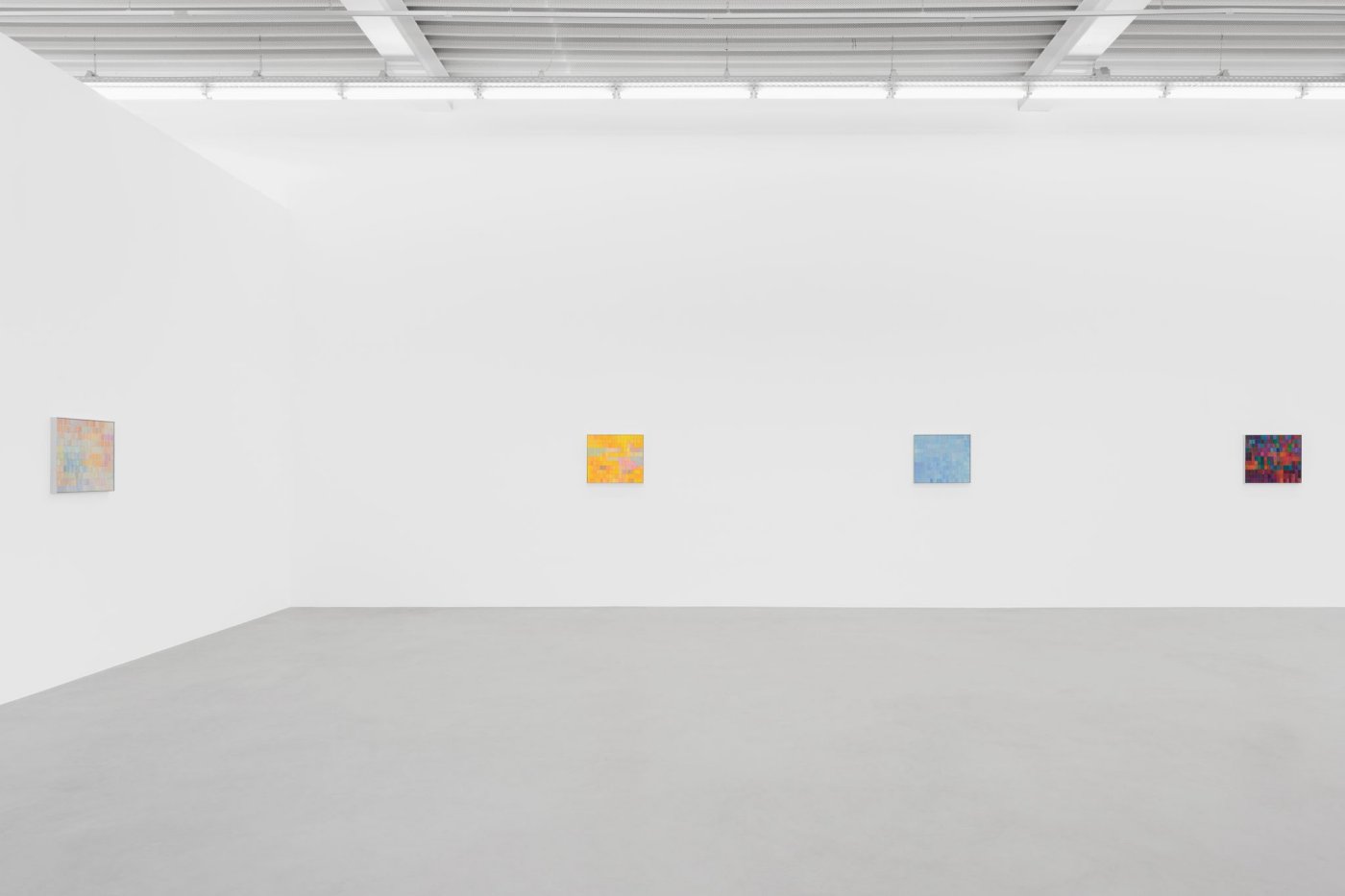
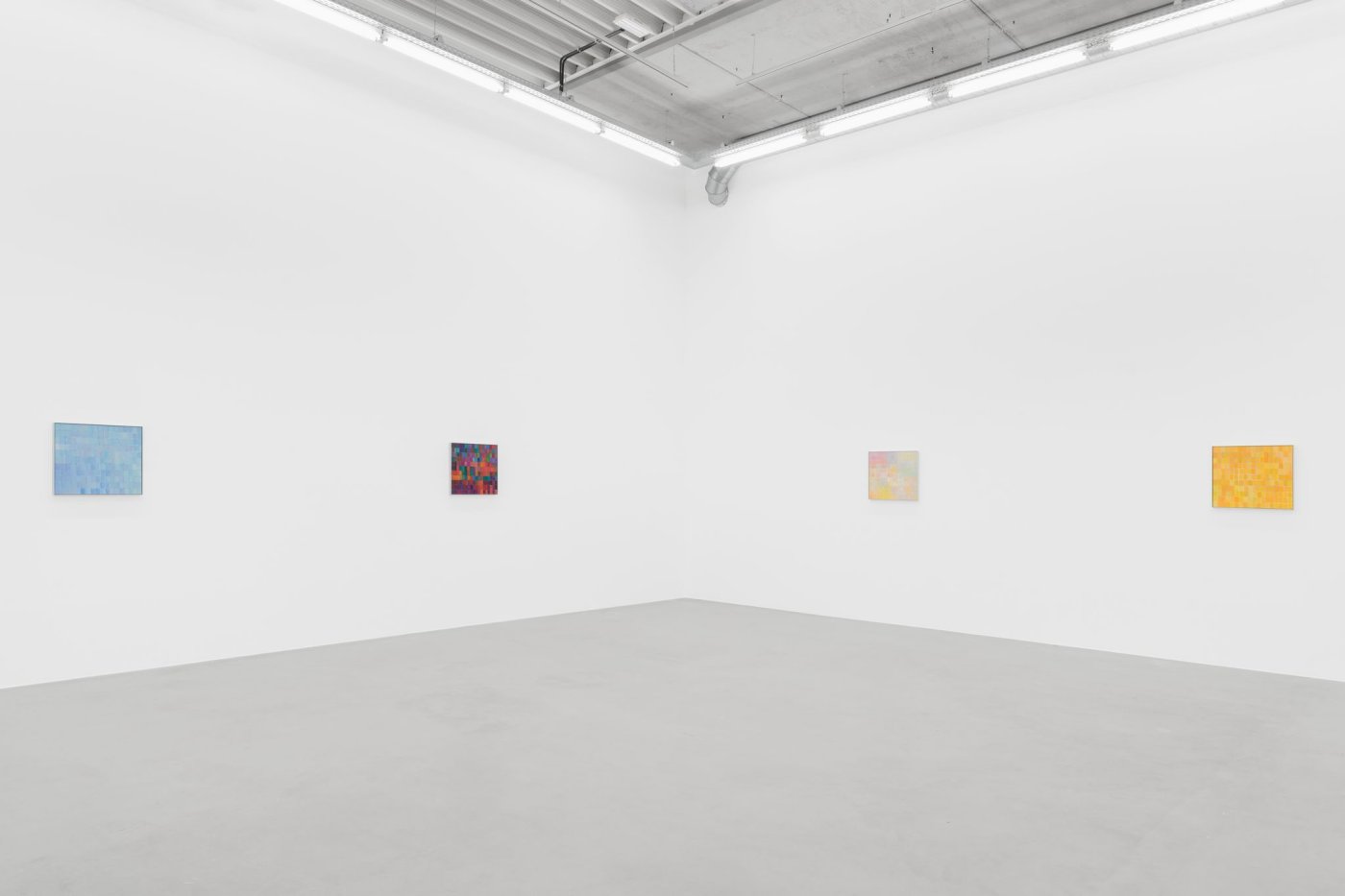
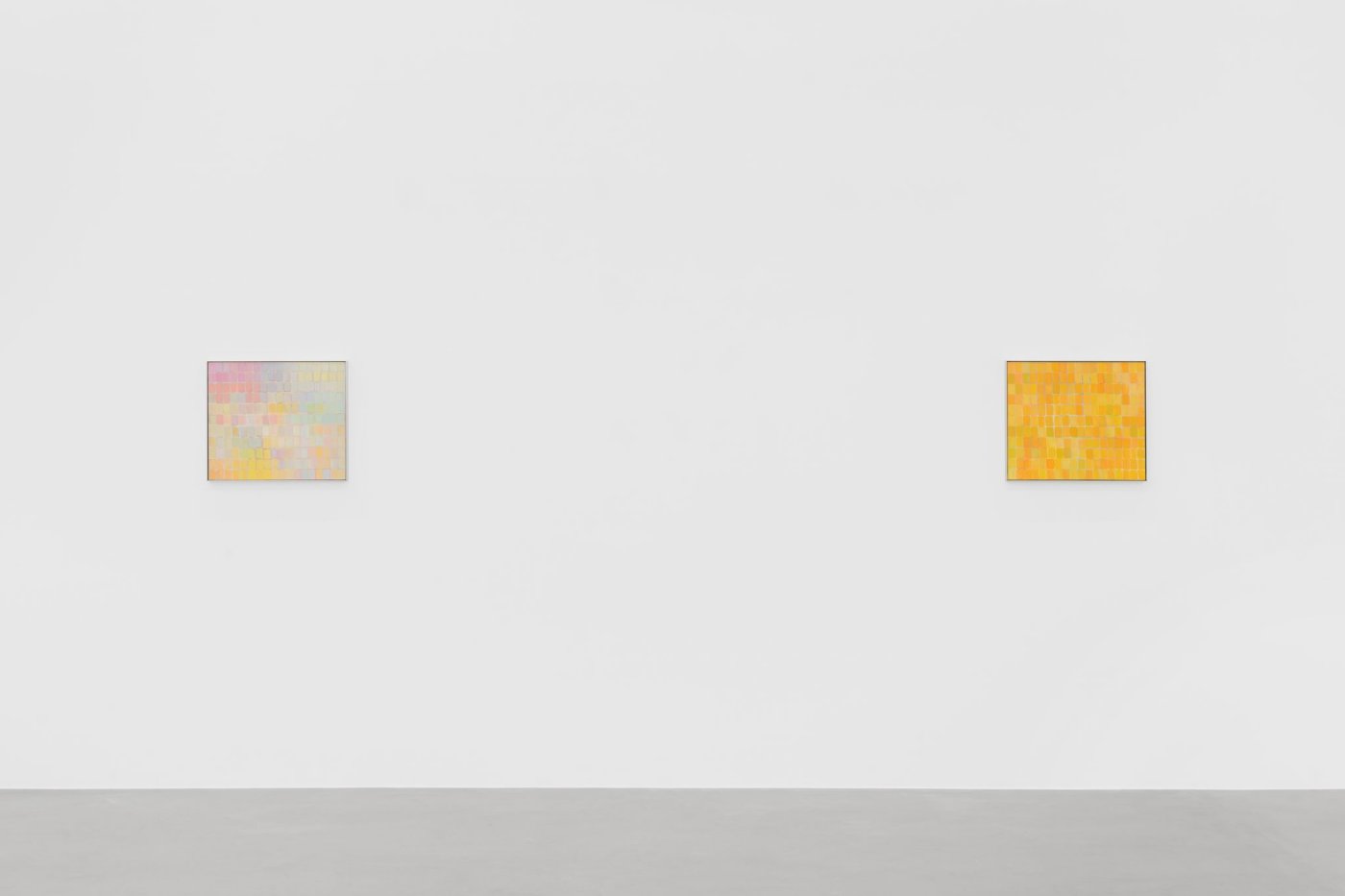
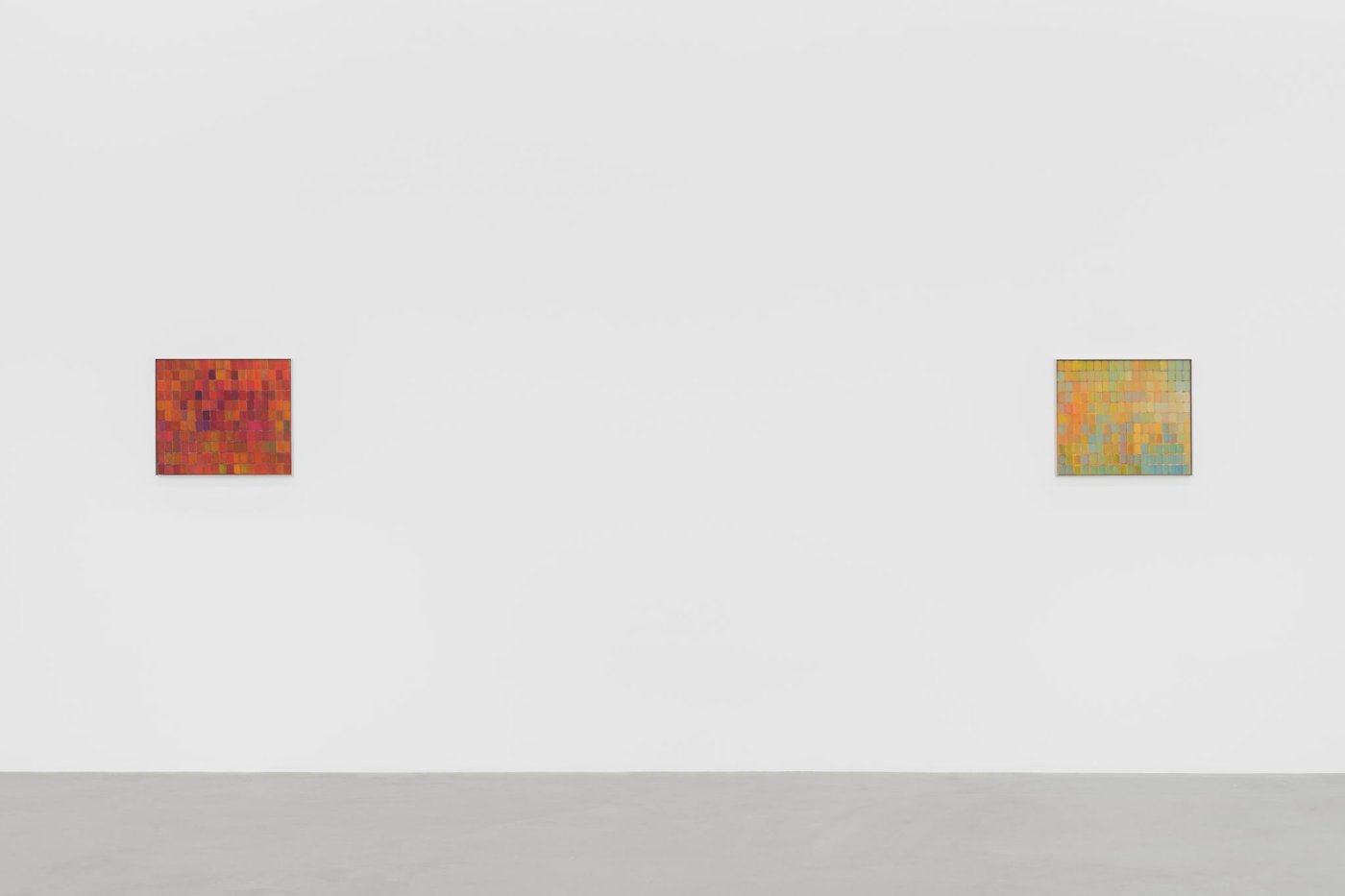
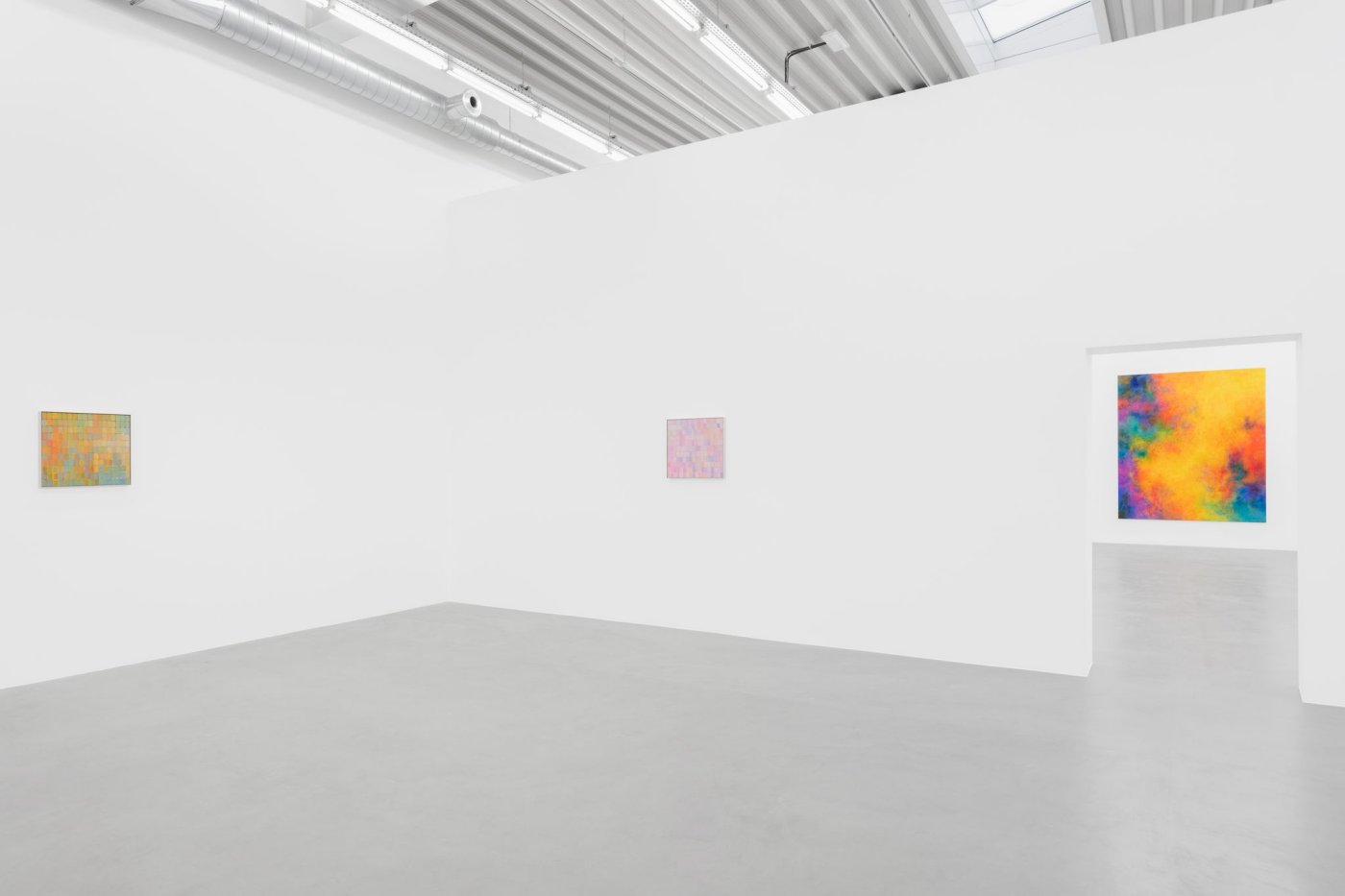
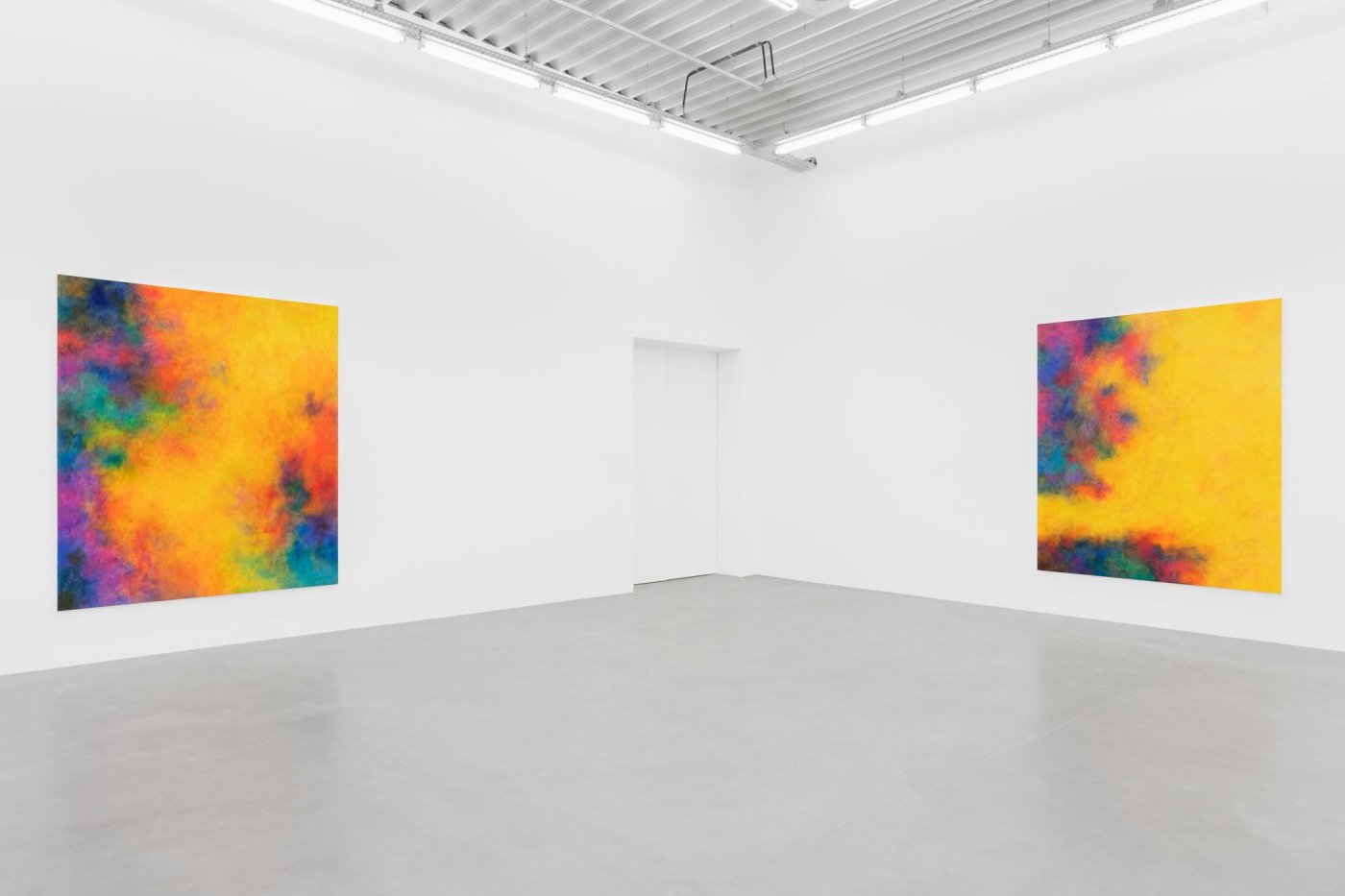
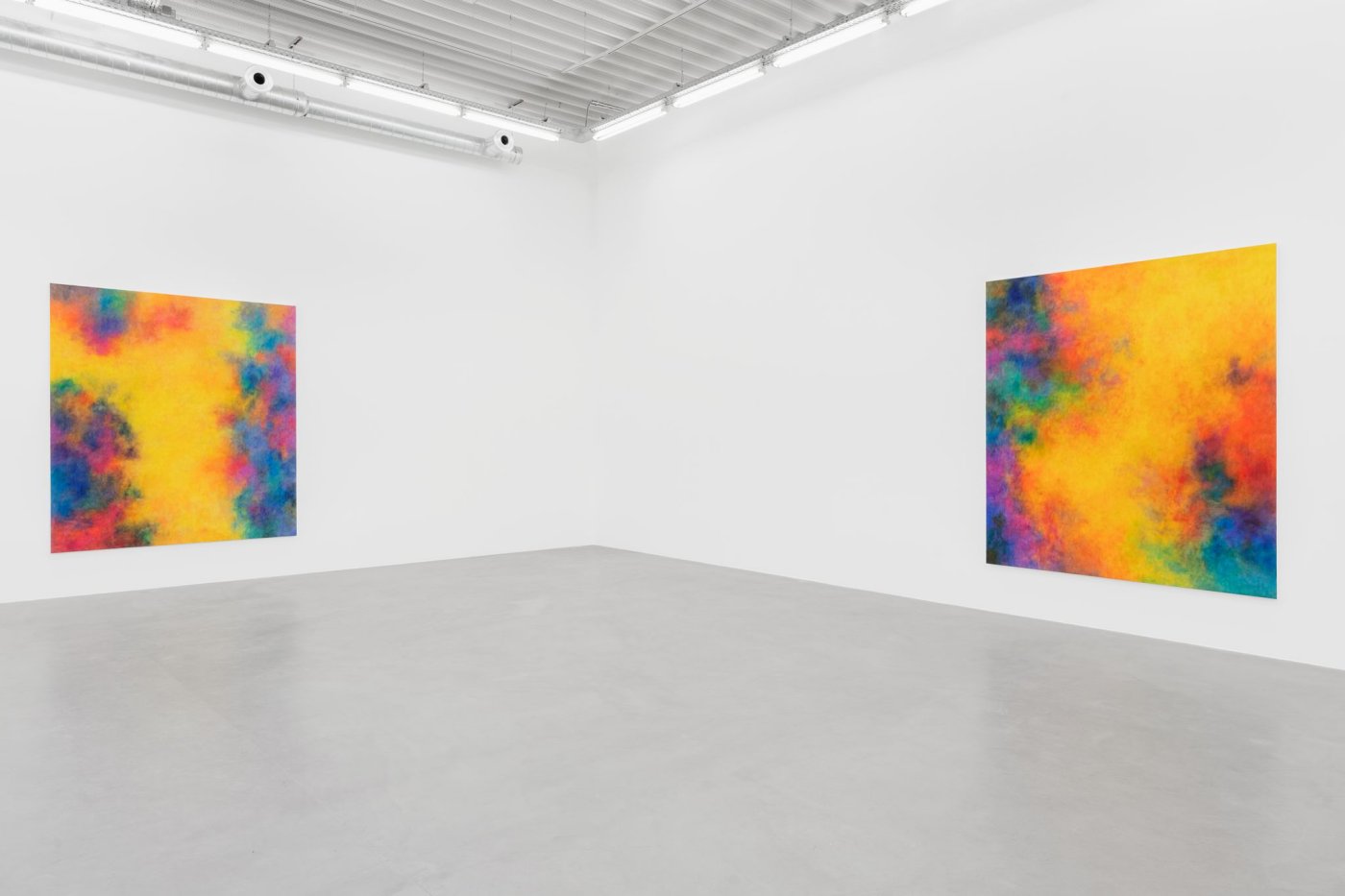
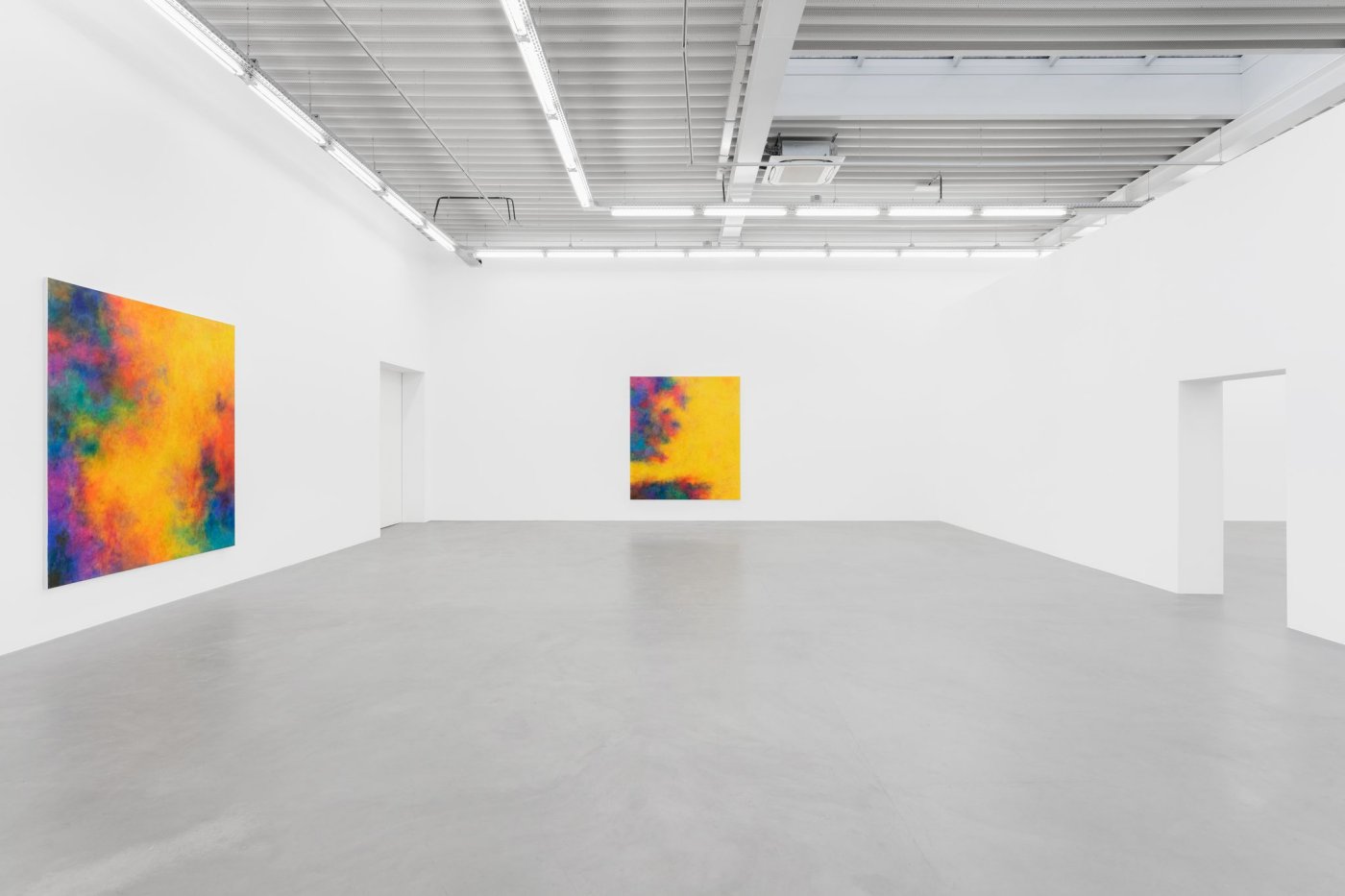
Jean-Baptiste Bernadet, Feelings
It was the first time that I understood that she would grow old. I had come to spend a few days there, at the start of summer. I suggested that we go out for a ride through the countryside. We were driving. My window was down: I smoke when I drive. Hers was closed: she doesn’t like the wind in her hair, which was still blonde then. I can see her, sitting beside me, two hands placed calmly on her black dress, two slender, bony hands that I have held in mine so many times. As a child, I would pinch their thin skin for a few seconds, and a small dam of flesh would take shape, before slowly sinking back, then disappearing altogether. I wished that these narrow little mounds that I shaped with the pressure of my clumsy fingers could somehow resist the inflow of blood and the elasticity of tissue. Other times, I would press my index finger to one of the veins that emerged where her wrist met her hand and watch, transfixed, as the blue bled away. As soon as I lifted my finger, the vein engorged with blood and rose to the surface of the skin once again, so blue beneath the white skin that it seemed to transport some lead-grey humour that was anything but vital. These hands are the only ones that I really know, the ones through which I contemplate all others, even the hands of the men who I desire, who I love. These were the hands, I think, in which I was transported – an ugly word, but an accurate one – as a swaddled newborn baby, and which carried me into the house where I would grow up. The body remembers those sensations, I would think. But not the eyes, of course. Somewhere, I stopped the car in the shade of a clearing in the forest. A row of trees hid from view the countryside beyond. A few oaks, maybe, but mostly poplars, whose leaves stirred in the wind and filled the air with a trembling like eyes filling with tears. I can see her, frail in her black dress, standing in this clearing full of wildflowers that grew higgledy-piggledy – a fallow field, I later understood, waiting to be planted with something else, more serious, more useful, less pretty. “Violet and mallow, buttercup, lavender and lime,” wrote Derek Jarman, looking at his own garden. This black silhouette, thin and almost furtive amidst a chaos of colours ringed in shadow, remains as a too-bright, overexposed image, an image that is eroded by the colour of time each spring and which will disappear forever if I don’t write it down.
We can only count on ourselves, on what we have seen and what we have lived, to try and feel out paintings. Of course, if we want to, we can talk with painters, visit their studios, open up a world of carefully chosen anecdotes, repeated gestures, ongoing series and unfinished paintings, unearth a host of clues. We can sift through their canvases with the help of history and theory – figuration and abstraction, line and colour, or whatever else – and offer up a thousand comparisons that might, somehow, let us touch upon some thing or another that could serve as a source or allow for a kind of clarity. But deep down, we know that if we are to understand, intimately, what painters do, we need to avoid prematurely fixing anything in the permanence of words. When we first find ourselves before a painting, it is only right that we feel a little disarmed, speechless, moved (though frozen still). We need to be able to let ourselves dissolve in a momentary, fleeting empathy like that of the water or the solvents that soften the bristles of the paintbrush, dilute the colours of the palette, and wash clean the hands of the painters come evening.
The air is pink, the jacaranda flowers blue, and the boys slip like shadows along the paths of the Parque Morelos, come evening, in summer, in Guadalajara. This is what I learned from the forty or so Pinturitas de Guerra and the accompanying photographs gathered by Jean-Baptiste Bernadet in his last book, No pasa nada, which was published at the end of his stay at the Casa Franco, built by the architect Luis Barragán at the end of the 1920s. I saw the equestrian statue of José Maria Morelos, the Catholic priest and revolutionary leader who helped to free Mexico 200 years ago and who, today, watches over the dance of bodies and glances in the park from his plinth. I saw a pack of Marlboro Gold on which Bernadet had tried out a few colours: sky blue, mallow mauve, tender pink, shades for lips that have yet to breathe in the white smoke of cigarettes. I saw two men’s hands, placed one on top of the other, tender and solemn, remembering other embraces. I saw pavements littered with jacaranda flowers, lined with low cement walls, only some of which are yellow, and beyond them clouds, marvellous clouds – the violet atmosphere that seems to surround all of the life in these images.
The painting has been with me for ten years now. It has followed me through moves from one home to another, though there have only been a few of them. It has accompanied me every day as I step past it to take a book from the shelf, or to turn up the volume on the speakers, and it is in my peripheral vision as I sit at my desk, writing this text. The background is black, flecked with concrete grey. Set against this are four sweeping arcs that intersect as if embracing one another, dominated by undereye violet and lilac, with shades here and there of dusty grey, petrol blue and a kind of fleshy beige that blends into the cement-like splatter. Between the background and these forms, the five letters of the word ‘lover’ spring forth like an ambush, hastily scrawled out in a toxic, ammoniac yellow. Crowded together as if to preserve the tenderness that links them, they seem fragile, and therefore serious; determined, and therefore naïve; that’s what I find touching, I think, about this painting. The edges of the canvas – and this has always intrigued me – are perfectly clean, with no runs or drips of paint. Jean-Baptiste Bernadet’s recent paintings, the ones that he exhibits today, no longer bear inscriptions and have seemingly lost their black background. But in each we find the same clean edges, the same heady yet sad music. The painting carves out a block of romantic ruin in my everyday domestic life, an address to the memory of the boy that I was and of the boy that I loved when I first brought this canvas home. I don’t love the same boy anymore; I love another – differently, of course. But the painting is still there, and this new boy doesn’t begrudge my fidelity to it.
It seems to me that the paintings of Jean-Baptiste Bernadet, each of his series, set out to explore one of the thousands of variations that exist between the solid state of the painted canvas, with its dogged permanence of a definitive object, and the liquid state of our emotions: the continuous, distracted flux of our perceptions, the waking dream of memories that furtively surface in the constant swell of our consciousness. An art of the fugue, of the vapour of time.
In 1939, after having a period of several years without writing, the Mexican poet Carlos Pellicer composed three ‘autumn sonnets’ that were dedicated to his friend, architect Luis Barragán. Autumn is a good pretext to say ‘I love you’ – a sad pretext, too, necessarily nostalgic. A long sob of violins, leaves like severed hands slowly decomposing on the wet pavements of cities, the odour of time. Pellicer evokes in these three poems the “blue desert of the sky”, the mute clamour of morning, the orange of the flowers placed at every window for the dead, the autumn days “so silently contemplated, so mysteriously understood.” Forty years later, when he was awarded the Pritzker Prize for his architectural oeuvre, Barragán paid homage in turn to his two closest friends: Pellicer and the painter Chucho Reyes. Forty years, it seems, is about the time it takes to develop in oneself a certain tint of melancholy. Jean-Baptiste Bernadet must be about that age. In his acceptance speech, Barragán thanked Reyes for having taught him “the art – the difficult art – of seeing with innocence,” and quoted several verses of Pellicer, which ended with the following lines: “eyes without vision, souls without hope.” I get the impression that here Barragán was speaking less as an artist and more as a lover and a believer. As for me, the boy that I love today has heavy, black eyelashes and dark eyes, eyes that I can’t read but which I believe in. Eyes ringed in mystery, behind the barricade of his long lashes.
- Emmanuel Guy, teacher, art historian and curator
Jean-Baptiste Bernadet, Feelings
C’est la première fois que j’ai compris qu’elle vieillirait. J’étais venu passer là quelques jours, c’était le début de l’été. Je lui ai proposé d’aller voir la campagne. Nous roulions. Vitre ouverte côté conducteur, je fume quand je conduis. Vitre fermée pour elle, elle n’aime pas le vent dans ses cheveux. Ils étaient encore blonds. Je revois ses deux mains posées calmement sur sa robe noire, à mon côté, deux mains étroites, osseuses, que j’ai tant manipulées. Enfant, je pinçais la peau fine quelques instants, une petite digue de chair rare se formait sur le dos de sa main. Puis la digue, lentement s’affaissait, s’annulait. J’aurais aimé que ces petits monticules longilignes, que j’avais façonnés par la pression de mes doigts maladroits, résistent à la pression du sang qui afflue, aux tissus qui se reforment. D’autres fois, je posais mon index sur l’une des veines saillantes là où le poignet devient la main. Je regardais fasciné la veine après mon doigt sur son parcours disparaître – débleuïr. Aussitôt que j’ôtais mon doigt, la veine reprenait place, se rengorgeait, au ras de la peau, si bleue sur la peau blanche qu’elle semblait transporter une humeur grise, de plomb, qui n’était pas la vie. Ses mains sont les seules que je connaisse vraiment, les mains à l’aune desquelles je regarde toutes les autres, même les mains des hommes qui me plaisent ou que j’aime. Ce sont, je crois, les premières mains qui m’ont transporté – le mot est laid, mais il est juste – tandis qu’à peine né, on m’emmenait emmailloté dans la maison où j’ai ensuite grandi. J’imagine que le corps garde le souvenir de ces sensations-là. Les yeux, eux, bien sûr, ne s’en souviennent pas. À un moment de notre promenade en voiture, je me suis arrêté à la fraîche, au creux d’une clairière. Une rangée d’arbres en découpait l’aire cachant à notre vue tout ce qui se situait au-delà. C’était quelques chênes peut-être et des peupliers surtout, dont les frondaisons en frémissant remplissaient l’air d’un tremblement de larmes. Et je la revois toute frêle, dans sa robe noire, dans cette clairière de fleurs champêtres, des fleurs plantées en désordre – un mélange pour les jachères, ai-je appris par la suite, un mélange en attendant autre chose donc, de plus sérieux, de plus rentable et de moins joli. « Violet et mauve, bouton d’or, lavande et citron vert », écrit Derek Jarman à propos de son jardin. De cette mince silhouette noire, presque furtive, dans ce grand chaos de couleurs cerné d’ombre, il ne me reste qu’une image trop vive, surexposée, que la couleur du temps érode un peu plus à chaque printemps, et qui disparaîtra si je n’en parle pas.
On n’a guère que soi, ce qu’on a vu et ce qu’on a vécu, pour tenter de ressentir la peinture. On peut, bien sûr, parler avec les peintres et visiter leurs ateliers. Il y a là tout un monde d’anecdotes choisies, de gestes répétés, de séries en cours et de toiles inachevées, tout un flot d’indices, si l’on veut. On peut, aussi, passer leurs toiles au tamis de l’histoire et des théories picturales – figuration et abstraction, dessin et couleur, que sais-je encore – et il y a là matière à mille comparaisons, comme pour tenter par ricochet d’atteindre quelque chose comme une source, une clarté. Mais on sait bien, dans le fond, que pour comprendre intimement ce que font les peintres, il faudrait pouvoir justement ne rien chercher à fixer trop tôt dans la permanence des mots. On a bien raison de se sentir d’abord un peu démuni, interdit et ému devant une toile. Il faudrait pouvoir alors se laisser dissoudre dans une sorte d’empathie fugace, fuyante même, empathie de l’eau ou des solvants, puisque c’est ainsi qu’on assouplit le poil des pinceaux, dilue les couleurs au fond des palettes et lave les mains des peintres, quand vient le soir.
Le fond de l’air est rose, les fleurs de jacaranda sont bleues, et les garçons passent comme des ombres dans les allées du parc Morelos quand vient le soir, en été, à Guadalajara. C’est ce que j’ai appris de la quarantaine de Pinturitas de guerra, et autant de photographies, qu’a rassemblées Jean-Baptiste Bernadet dans son dernier livre, No pasa nada, publié à l’issue d’un séjour à la Casa Franco, construite par l’architecte Luis Barragán à la fin des années 1920. J’ai vu la statue équestre de José Maria Morelos, prêtre catholique qui fut l’un des meneurs de la guerre révolutionnaire qui libéra le Mexique il y a 200 ans et qui mène aujourd’hui autour de son socle la danse des corps qui se toisent et des regards qui se frôlent, parfois. J’ai vu un paquet de Malboro Gold sur lequel le peintre a tenté quelques couleurs – bleu du ciel, mauve guimauve, rose tendre, teintes pour des lèvres qui n’auraient pas inspiré encore la fumée blanche des cigarettes. J’ai vu deux mains d’hommes, posées l’une sur l’autre, tendres et solennelles, en souvenir d’autres étreintes. J’ai vu les trottoirs jonchés des fleurs du jacaranda, bordés de petits pans de murs de béton qui ne sont pas tous jaunes et par-delà, les nuages, de merveilleux nuages – l’atmosphère violette, je crois, de toute cette vie-là.
Le tableau m’accompagne depuis dix ans. Il m’accompagne quand je déménage, mais ça n’arrive pas très souvent. Il m’accompagne surtout dans mon quotidien, je passe devant pour me saisir d’un livre, je le frôle, il est à portée de mes doigts quand je pousse le volume de l’ampli du salon, il est dans l’angle de ma vision lorsque je travaille à mon bureau, tandis que j’écris ce texte. Le fond est noir, maculé d’un gris de béton. Sur ce fond quatre arcs de cercle dessinent comme une embrassade, où domine un violet de cerne et de lilas, mêlé ici au gris de poussière, là au bleu pétrole et plus bas à une sorte de beige-chair qui se confond avec les tâches de béton. Entre le fond et les arcs, tracées comme à la hâte au jaune toxique, se détachent les cinq lettres du mot lover, en embuscade, à l’ammoniaque. Pressées les unes contre les autres comme pour ne rien perdre de la tendresse qui les lie, elles ont quelque chose de fragile et donc de sérieux ; de décidé et donc d’ingénu ; c’est cela-même, je crois, qui me touche. Les bords du tableau, et cela m’a toujours intrigué, sont parfaitement propres, sans bavures ni débordements. Les tableaux récents de Jean-Baptiste Bernadet, ceux qui sont exposés aujourd’hui, ne portent plus d’inscriptions et ils ont, au moins en apparence, perdu leur fond noir. En revanche, on le constatera sur pièce, la netteté de leurs bords et la petite musique entêtante et triste qu’ils contiennent, n’ont pas disparu. Le tableau découpe dans mon quotidien domestique un petit bloc d’abîme amoureux, une adresse, le souvenir du garçon que j’étais et de celui que j’aimais quand ce tableau est entré chez moi. Je n’aime plus le même garçon, j’en aime un autre, différemment bien sûr. Mais le tableau est toujours là et le nouveau garçon ne me tient pas rigueur de cette fidélité-là.
La peinture de Jean-Baptiste Bernadet, chacune de ses séries, s’attache à explorer, je crois, l’une des mille variations qui existent entre l’état solide d’une toile peinte, sa permanence obstinée d’objet définitif et l’état liquide de nos émotions, le flux distrait des perceptions, le rêve éveillé des souvenirs qui furtivement affleurent dans le roulis permanent de la conscience – art de la fugue, vapeur du temps.
En 1939, après plusieurs années passées sans écrire de poésie, le poète mexicain Carlos Pellicer adresse à son ami Luis Barragán trois poèmes, trois « sonnets d’automne », qu’il lui dédie. L’automne est un beau prétexte pour dire je t’aime – un prétexte un peu triste aussi, forcément nostalgique. C’est le sanglot long des violons, les feuilles comme des mains coupées qui lentement se décomposent sur le sol mouillé des villes, l’odeur du temps. Pellicer évoque dans ces trois poèmes le « désert bleu du ciel », la clameur muette des matins, l’orange des fleurs pour les morts partout aux fenêtres, et les journées d’automne « si silencieusement contemplées, si mystérieusement comprises ». Quarante ans plus tard, tandis qu’il reçoit le Pritzker Prize pour son œuvre architecturale, Luis Barragán rend à son tour un hommage ému à deux de ses amis les plus chers, le peintre Chucho Reyes et le même Carlos Pellicer. Quarante ans, paraît-il, c’est à peu près le temps qu’il faut pour développer en soi une certaine teinte de mélancolie. C’est à peu près l’âge, aussi, de Jean-Baptiste Bernadet. Barragán remercie Chucho Reyes de lui avoir appris « l’art – difficile – de voir avec innocence » et cite quelques vers de Pellicer dont voici les deux derniers : « yeux sans vision, âmes sans espoir ». J’ai l’impression qu’à ce moment-là de son discours, c’est moins l’artiste que l’amoureux et le croyant, qui nous parle. Quant à moi, le garçon que j’aime aujourd’hui a de grands cils noirs et des yeux sombres, que je ne sais pas lire mais que je sais croire – des yeux ourlés de mystère, derrière la barricade de ses longs cils.
- Emmanuel Guy, enseignant, historien de l'art et commissaire d'exposition Photo: Huggard & Vanoverschelde Photography

